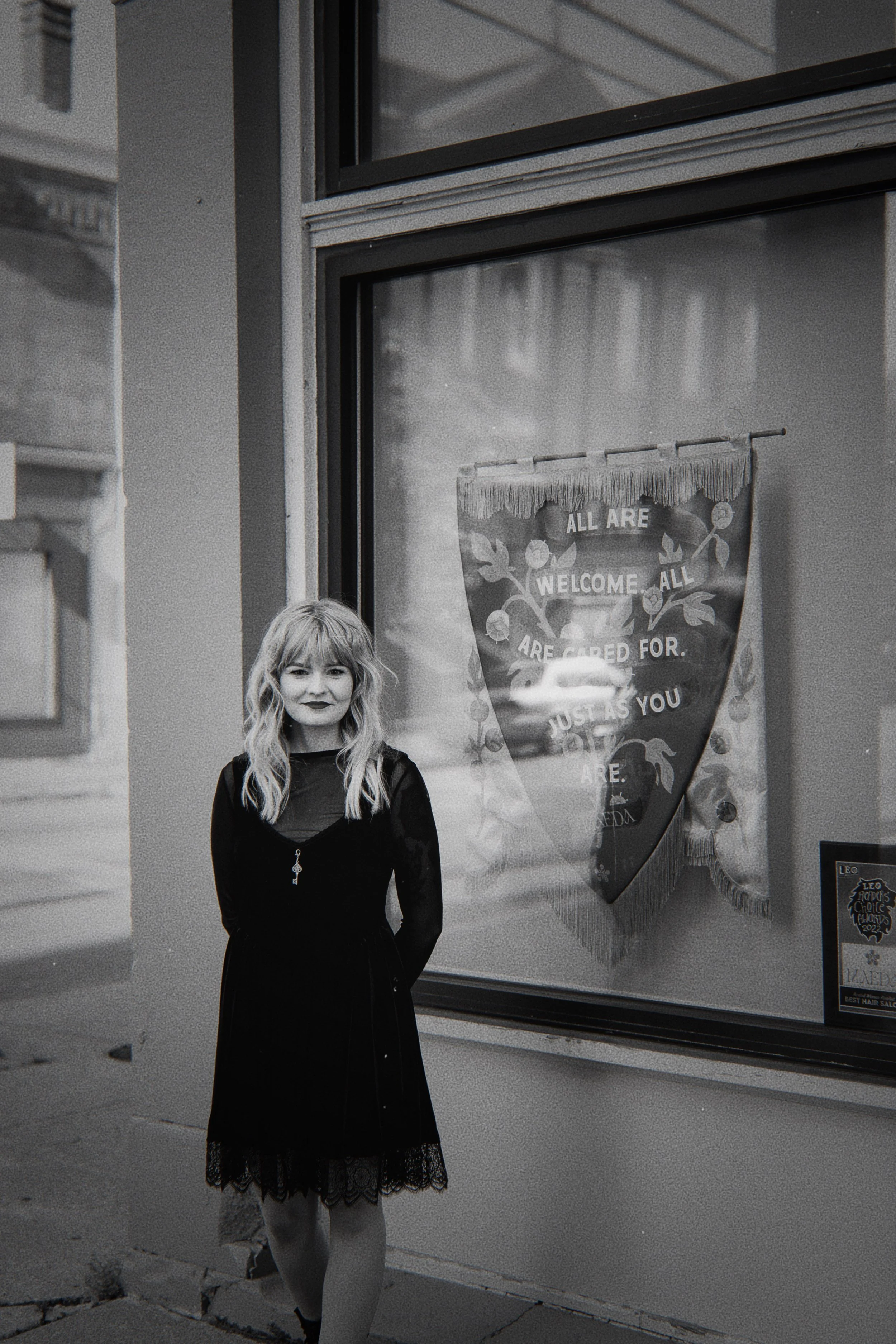MY JOURNEY INTO DEATHWORK
A path carved by care, grief, and the calling of deathwork.
Photo by Soulful Film
CONTENT WARNING: The story I share here touches on illness, disability, mental health (including hospitalization and suicide), death and dying (of loved ones and beloved pets), grief, and sudden loss through violence and accidents. Please move through this story at your own pace and take care of your well-being as you read.
Some of my earliest memories are of visits to the doctor—being poked, prodded, swabbed, and prescribed the sweet, pink syrup of amoxicillin. As a child, I was no stranger to illness: strep throat, pneumonia, bronchitis, viral infections, and at the age of four, an asthma diagnosis. I remember asking my mom if people could die from asthma. She didn’t sugarcoat it, explaining that while it was possible, it was unlikely in my case. Thanks to an inhaler and medication, I was able to live a relatively active childhood, participating in dance, cheerleading, and regular everyday activities.
But as I got older, things changed. I began struggling with widespread chronic pain and debilitating fatigue. By fourteen, I was diagnosed with chronic fatigue syndrome, fibromyalgia, hypermobile spectrum disorder (HSD) and POTS/dysautonomia. I eventually quit cheerleading, a sport I had loved from an early age. At my worst, I was sleeping up to sixteen hours a day—if I wasn’t at school, I was in bed. Some days, I missed school entirely because I physically couldn’t get up.
Eventually, a rheumatologist prescribed me a medication that didn’t leave me feeling completely numb or wired. It helped manage my symptoms and, for a while, I was able to get by. But by the time I reached college, the medication had stopped working as well. Both my physical and mental health took a serious hit.
That period in my life culminated in a suicide attempt. Overwhelmed by the strain of working, going to school full time, being chronically ill, and trying to keep up with the social life of a “normal” young adult; I couldn’t see a way out. Fortunately, I survived. But it was the catalyst for new diagnoses—major depressive disorder, generalized anxiety disorder, and borderline personality disorder. I left my job and entered a partial hospitalization program at a psychiatric facility for over a month to get the help I needed.
Since then, I’ve spent years seeking support from psychiatrists, psychologists, doctors, and therapists, collecting a variety of mental health diagnoses along the way—bipolar disorder, PTSD, ADHD, OCD, etc. But after starting medication for ADHD, I realized that I might actually be autistic, and that many of my mental health struggles were the result of autistic burnout. That realization alone could fill a novel, but it’s a journey I continue to explore.
Throughout all of this, my physical health remained complex and ever-changing. I’m still chronically ill, and more recently, I’ve been diagnosed with lupus and PFAPA—a periodic fever syndrome. These conditions shape my daily reality and deepen my understanding of the body’s fragility and resilience.
After one of my stays in a psychiatric hospital, I decided I wanted to help others feel good about themselves. I enrolled in cosmetology school, and after a bit of hard work, I finished school, graduated, passed the dreaded state board exam, and earned my cosmetology license—something I hadn’t accomplished since high school. As a licensed Master Cosmetologist in Kentucky, I worked in salons as a hairstylist and in a photo studio as an assistant stylist. Though I still find fulfillment in helping others feel good about their appearance, I began to feel a shift in my desire to make a bigger impact.
Death had always brushed close to my life. My first run-in with death was when Kacey, my family's dog, was poisoned by a neighbor and had to be euthanized. My next experience was the death of my “Nanny,” my grandmother, when I was just five years old, which, despite being so young, impacted me greatly. As a young adult, I experienced a string of deaths of close friends caused by addiction, as well as the losses of a few beloved pets. In 2020, I cared for my sister’s dog after she suddenly lost the use of her back legs. For months, I nursed her daily, taking her to the vet for special treatments until she regained mobility. Though she eventually had to be euthanized after a sudden seizure on Halloween night, that time with her showed me both the labor and the love of tending another being through decline.
In the years that followed, grief seemed to gather. I lost my grandfather to Parkinson’s disease, two cousins (one to a car accident and one to gun violence), and a family friend to a sudden heart attack. These losses arrived one after another, compounding the truth I already knew: I was no stranger to death.
Somewhere along that path, I kept encountering the phrase 'death doula.' Each time, it struck me like a bell—familiar and resonant, as though naming something I already carried within me. By the time those waves of grief arrived, I couldn’t ignore the pull anymore.
In spring 2023, I wrote an essay in hopes of earning a scholarship to the Deathwives’ Deathschool program. Luckily, my story moved them and I was able to enroll, and in doing so, I stepped fully into deathwork—a path that felt less like a career choice and more like a homecoming.
Through my own experiences with illness, pain, and near-death, I’ve come to confront mortality in ways that many don’t until much later in life, if at all. In a society that treats death and dying as taboo subjects, I believe we’re missing out on living life to the fullest.
Now, through my work with Deathcraft, I hope to break the silence and bring these difficult conversations out into the open—into our homes, around our dinner tables, and within our communities. I want to educate people about death and dying, end-of-life care, advance care planning, home funerals, and the kind of compassionate care that our ancestors used to give each other. Deathwork is sacred, human-to-human work that our society desperately needs, and I’m committed to bringing it back into the light.
IN A SOCIETY THAT TREATS DEATH & DYING AS TABOO SUBJECTS, I BELIEVE WE’RE MISSING OUT ON LIVING LIFE TO THE FULLEST.
Learning & Lineage
My path into deathwork is both deeply personal and formally trained. I believe that deathcare is not only a profession but also a lineage of wisdom, compassion, and service that I am honored to step into.
I have trained with Deathwives’ Deathschool, where I received a scholarship to study sacred deathcare, home funerals, grief support, and end-of-life education. I’ve continued my studies with The Centre for Sacred Deathcare, End-of-Life University, and through the work of renowned hospice nurse and educator Barbara Karnes, RN.
Alongside classroom training, I’ve gained hands-on experience as a Compassionate Companion at Hildegard House—Kentucky’s only comfort care home—where I supported residents in their final days of life with presence, care, and dignity.
Before stepping fully into deathwork, I earned my license as a Master Cosmetologist in Kentucky, working in salons and photo studios. This work honed my skills in attentive care, touch, and helping people feel at ease—skills that translate seamlessly into the intimate, human-centered work of deathcare.
My education is ongoing. I continue to deepen my learning through courses, mentorship, and community practice, drawing not only from modern death education but also from the ancestral traditions of tending the dying, caring for the dead, and supporting the living through grief.
This blend of personal lived experience, professional training, and community-based practice shapes the heart of Deathcraft and the care I bring to every family I serve.
Selected Studies & Certifications
Deathwives’ Deathschool — Sacred deathcare, home funerals, grief tending, end-of-life education (scholarship recipient)
La Mort — The Liminal (where Deathcraft was born)
The Centre for Sacred Deathcare — Designing a Healing Funeral, Navigating Pet Death
End-of-Life University — Death & Dying Course Instructor Training, Step-by-Step Roadmap for End-of-Life Planning
Hildegard House, Louisville, KY — Compassionate Companion volunteer; bedside support in comfort care home
Grave Tending Solutions — Grave Tending 101 (6 week course), Certified Grave Care Professional
Licensed Master Cosmetologist, Kentucky — Professional background in care, touch, and helping others feel seen






